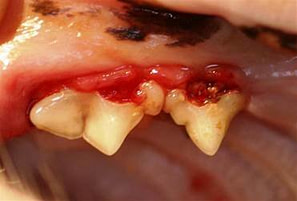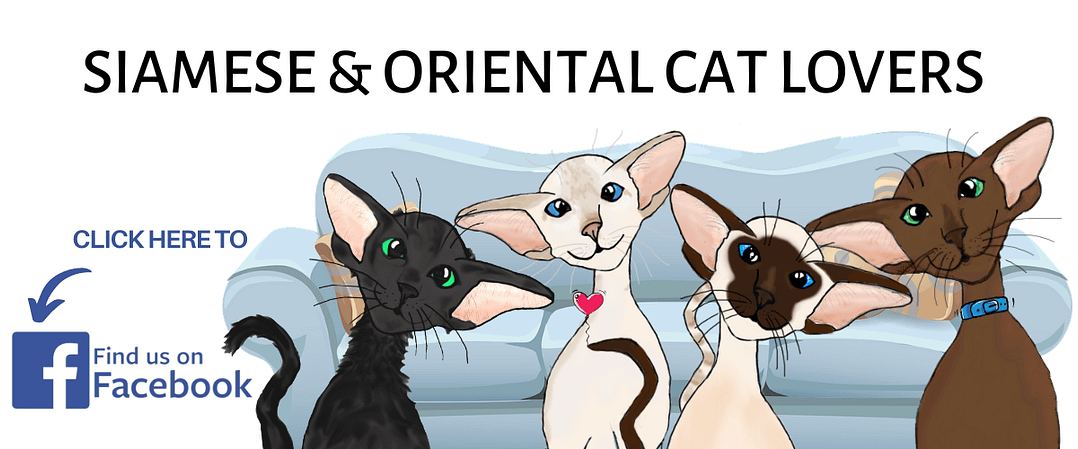Teeth decay in cats is the fourth in a series of articles specially researched and written for Siamese Cat Breeder relating to dental care and oral hygiene for cats by Sheila Calloway RVN
Sheila is a qualified veterinary nurse and has over 30 years experience working with and keeping pets. Many of you will have seen Sheila at cat shows and she is usually found on the Siamese section with her cats.
Feline Oral Resorptive Lesions

Feline oral resorptive lesions (FORLs) can be found in anywhere from 28% to 67% of all adult cats. It has been reported that 60% of cats over the age of 6 years have at least one of these resorptive lesions and will be likely to develop more in the future. For this reason, annual dental exams, cleanings and radiographs are essential to monitor your cats’ teeth!
FORL’s are lesions on the teeth themselves, and range from barely penetrating the enamel at the neck of a tooth right above the gum line, to full-blown loss of the entire crown with gum tissues growing over the remaining root tip. The molars and premolars are most commonly affected, but these lesions can appear on any tooth and on any surface of a tooth.
The teeth become functionally destroyed as sections of tooth are re-absorbed leaving areas of exposed tooth tissue below the enamel and weakened roots. These lesions were originally called feline “neck lesions” or cat “cavities” because the tooth damage is typically observed in the “neck” region of the tooth where the tooth meets the gum line.
Neck lesions can appear as areas of reddened tissue at the tooth-gum interface almost as if the gum (gingival) tissue is growing into the tooth or is covering over the base of the tooth. In some cases, there appears to be a “hole” or ‘concavity’ in the tooth (see above picture)

Once the outer layer of enamel is gone, the teeth may become quite painful to the touch. The actual ring-like lesions can be seen, if you can examine the cat’s mouth. Teeth may break off at the damaged sites, and cats sometimes show “jaw chattering” if the area is touched, due to pain. Many cats will not eat well because of the discomfort.
Feline oral resorptive lesions are second only to periodontal disease (please see article 3) in incidence of oral disease. They have only been recognized for about the last 40 years, with increasing frequency starting in the 70’s. As of yet, it is unknown why they occur, and many studies are currently being undertaken to discover the cause.
However, it is known that they result from the activation of cells called odontoclasts. These cells are responsible for the normal remodeling of tooth structure. In the oral resorptive lesion process, they continue to reabsorb tooth structure until in some instances the entire tooth is lost
Many potential causes have been offered for this problem, including existing periodontitis (disease of teeth and gums – see article 3); viral exposures and renal or kidney problems. Any cat can suffer from this problem, although Siamese and Abyssinians seem to be more predisposed.
Where do the lesions occur?

The majority of the lesions are on the on the outside of the tooth, against the cheek (buccal surface), however you can also see them on the inside.
Are resorptive lesions painful?
These lesions can be excruciatingly painful, especially when they are advanced.
However, most cats will not show evidence of oral pain, even when the tooth is fractured with an exposed root canal.
How are resorptive lesions diagnosed?
- Diagnosis is done by a combination of visual, tactile (probing) and radiographic means.
- The lesions will usually start out as little erosions along the gum line with associated inflammation to the gums in the area (gingivitis).
- Dental radiology is used to diagnose lesions under the gum line, to determine the extent of the lesion, as well as to determine if there is any root damage.
- They can then progress to large holes in the teeth, and eventually can destroy most of the tooth. In severe cases, the entire crown of the tooth can be lost, with only the roots remaining. These lesions will usually be rough when a finger is rubbed along the suspected lesion.
- Some cats may display ‘teeth chattering’ if the affected teeth are touched
- A bony bulge over the root of an affected tooth may occur (see above picture)
- Weight loss
- Drooling or excess salivation
- Refusal to eat the hard portions of diet or kibble foods
- General malaise, isolation.
- Dental radiology is used to diagnose lesions under the gum line, to determine the extent of the lesion, as well as to determine if there is any root damage.
- Oral bleeding – look out for for blood around the food and water bowels
- When brushing your cat’s teeth, look for excess accumulation of hard firm calculus (tartar). These accumulations suggest the cat is not chewing (probably because of pain) on the side with greater calculus accumulation
- Missing or fractured teeth
- Generalized oral inflammation (stomatitis)
NB The most common clinical presentation in cats with resorptive lesions may be no (overt) sign of pain
Stages and classification of tooth Resorption; Stage 1 (TR 1): Mild dental hard tissue loss
Stage 2 (TR 2): Moderate dental hard tissue loss with loss of dentin that does not extend to the pulp cavity inside the tooth
Stage 3 (TR 3): Deep dental hard tissue loss with loss of dentin that extends to the pulp cavity, but most of the tooth remains.
Stage 4 (TR 4): Extensive dental hard tissue loss with loss of dentin that extends to the pulp cavity and most of the tooth has lost its integrity.
(TR4a) Crown and root are equally affected;
(TR4b) Crown is more severely affected than the root;
(TR4c) Root is more severely affected than the crown.
Stage 5 (TR 5): Remnants of dental hard tissue are visible only as irregular bumps in the gum, and gum (gingival) covering is complete.
Treatment of resorptive lesions

Some vets feel that all affected teeth should be extracted, no matter how mild the disease since the lesion is almost invariably progressive, and treatment is delaying the inevitable. In addition, as the disease progresses, the lesion will again become painful.
Other vets feel that some of the teeth can be restored, perhaps using any one or all of a combination of treatments; as it will give the cat at least some time with a functioning, pain free tooth. These treatments include cleaning and de-scaling under anesthetic, and fluoride therapy, restoration (fillings), and extraction.
Treatments may also be supported with courses of antibiotics and/or steroid injections
How can we prevent tooth resorption in our cats?
An exact cause or set of circumstances that result in tooth resorption has not yet been established.
Therefore sadly, it is not possible to effectively prevent tooth resorption!
However, early recognition of the disease by your vet performing thorough oral exams with intraoral probing and dental radiography is the best strategy we can adopt.
Finally – Article 5: Feline Oral Hygiene – 5 Step Plan!
Coming soon on Siamese Cat Breeder!


